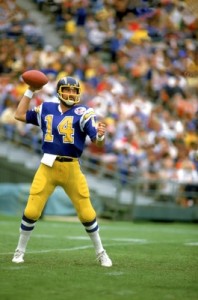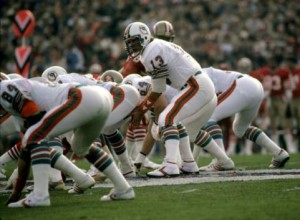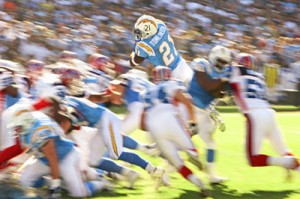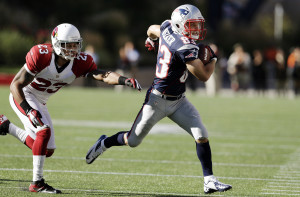That year, shortened to 9 games by the strike, saw some of the best fantasy production ever. Wide receiver Wes Chandler had 1,032 yards and 9 touchdowns despite missing one game; he had arguably the most dominant fantasy season since 1970 by any wide receiver. Quarterback Dan Fouts averaged 320 passing yards per game, an NFL record that stood until 2011; he was the top fantasy quarterback that season. San Diego had a bit of a shared running back situation, as backup James Brooks was the 25th-most valuable fantasy RB that year, but starter Chuck Muncie was the 4th best fantasy runner. If you want to look at the best fantasy quartets, the 1982 Chargers stand out even farther from the pack. That year, tight end Kellen Winslow had one of the most dominant seasons in fantasy history, and was easily the top fantasy TE in the NFL.
So the 1982 Chargers had the best QB, best WR, and best TE, and the 4th-best RB. Can any other team come close to matching that? The 1993 and 1994 49ers come very close, with Ricky Watters, Jerry Rice, Steve Young, and Brent Jones. Both years, Young and Rice were the top fantasy players at their positions; in ’93, Watters was the #2 RB and Jones the #5 TE; in ’94, Watters was the #5 RB and Jones the #3 TE. Last year’s Chiefs nearly matched what the ’82 Chargers did: Patrick Mahomes was the top fantasy QB, Tyreek Hill the top fantasy WR, and Travis Kelce the top fantasy TE. RB Kareem Hunt was a top-5 fantasy RB through 12 weeks, when the Chiefs released him.
But my vote for the best fantasy triplets goes to the Chargers. I found the VBD score for the top QB, RB, and WR for every team since 1970, and then calculated the geometric mean of those three scores. The table below shows the top 200 seasons by this metric. Here’s how to read the table below. The top trio was the Chargers group from 1982. That year, Fouts had 130.2 points of VBD, Muncie had 116.8 points of VBD, and Chandler had 218.4 points of VBD. Fouts was the top QB in 1982, Muncie was the #4 RB, and Chandler the number one wide receiver. The geometric mean of the three VBD scores was 149.2, the best ever. [continue reading…]




